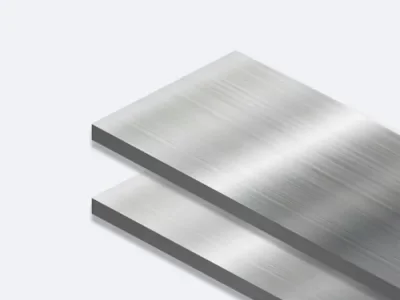
301 stainless steel is an austenitic stainless steel with excellent toughness and machinability. It is one of the most widely used in the 300 series stainless steel, mainly used in areas requiring good formability and corrosion resistance. The chemical composition of 301 stainless steel primary includes chromium, nickel, manganese, nitrogen, and other elements. The elements play a key role in the stability and corrosion resistance. Compared with 304 stainless steel, 301 stainless steel has a faster rate of work hardening and is more suitable for the manufacture of a variety of complex-shaped parts.
301 stainless steel can be processed by cold working, heat treatment and surface treatment to meet the needs of different application scenarios. For example, cold working can increase the strength and hardness of stainless steel, improving its wear resistance and fatigue resistance; heat treatment can improve the corrosion resistance and high-temperature performance of stainless steel; surface treatment can make stainless steel have a good appearance and corrosion resistance, to extend its service life.
301 Stainless Steel Composition
| Grade | Carbon | Manganese | Phosphorous | Sulfur | Silicon | Chromium | Nickel | Nitrogen | Iron |
|---|---|---|---|---|---|---|---|---|---|
| 301 | 0.15% | 2.00% | 0.045% | 0.030% | 1.0% | 16.00 – 18.00% | 6.00 – 8.00% | 0.10% | Balance |
301 Stainless Steel Mechanical Properties
| Mechanical Properties | Value |
|---|---|
| Yield Strength | 30 ksi (205 MPa) |
| Ultimate tensile strength | 75 ksi (515 MPa) |
| Elongation to break | 40% |
| Hardness | Rockwell 95 HRBW |
301 Stainless Steel Physical Properties
| Physical Properties | Value |
|---|---|
| Density | 0.287 lbs.cu.in. |
| Melting Point (Approx.) | 1400°C |
| Electrical Resistivity @ R.T. | 72 Microhm·cm |
| Thermal Expansion Coefficient (0° to 100°C) | 16.9 x 10-6/°C |
| Thermal Conductivity @ 100°C | 16.3 W/m·K |
301 Stainless Steel Equivalent
- UNS S30100
- EN No. 1.4310
- EN X10CrNi18-8
- JIS SUS301
Forms
301 Stainless Steel Specifications
- ASTM A240/A240M, Standard Specification for Chromium and Chromium-Nickel Stainless Steel Plate, Sheet, and Strip for Pressure Vessels and for General Applications
- ASTM A480/A480M, Standard Specification for General Requirements for Flat-Rolled Stainless and Heat-Resisting Steel Plate, Sheet, and Strip
- ASTM A666, Standard Specification for Annealed or Cold-Worked Austenitic Stainless Steel Sheet, Strip, Plate, and Flat Bar
301, 301L, and 301LN Comparison
Chemical composition
- 301 contains high chromium (Cr) and nickel (Ni) content and has good corrosion resistance and processing performance.
- 301L stainless steel: based on 301 reduced carbon (C) content, and increased nitrogen (N) content, to improve the welded joints’ resistance to grain boundary corrosion, while maintaining good strength and toughness.
- 301LN Stainless Steel: Based on 301, the carbon content has been further reduced and the nitrogen content has been increased to improve its corrosion resistance and weldability.
Mechanical properties
- Yield strength: the yield strength of 301 is ≥205 MPa, the yield strength of 301L is ≥220 MPa, and the yield strength of 301LN is ≥240 MPa.
- Tensile strength: the tensile strength of the three stainless steels is≥515 MPa.
- Elongation: the elongation of 301 is ≥40%, and the elongation of 301L and 301LN is ≥45%.
- Hardness: the hardness 301 is ≤95 HRB, and 301L and 301LN is ≤100 HRB.
Application Scenarios
- 301: due to its excellent cold working strengthening, corrosion resistance and weldability, it is commonly used in springs, screens and internal and external structural materials of railway vehicles, etc.
- 301L stainless steel: due to its good weldability and corrosion resistance, it is commonly used in occasions that require good welding performance, such as chemical equipment and pipelines.
- 301LN stainless steel: due to its higher corrosion resistance and weldability, it is suitable for more demanding environments and occasions requiring higher welding performance.
304 vs 301 Stainless Steel
- Elemental content:
- Stainless steel 304 contains 8 percent nickel and less than 0.08 percent carbon.
- Stainless steel 301 contains 6% nickel and higher carbon content.
- Properties:
- Stainless steel 304 has good corrosion resistance and is suitable for various environments.
- Stainless steel 301 has higher tensile strength and hardness in cold working, but slightly lower corrosion resistance.
- Uses:
- Stainless steel 304 is widely used in food containers, medical apparatus, building materials and other fields.
- Stainless steel 301 is commonly used in trains, aircraft, springs and other occasions that require higher strength and hardness.
FAQ
301 stainless steel should be non-magnetic or weakly magnetic in its normal state. However, when 301 alloy undergoes cold working (e.g., cold rolling), its internal structure will change, increasing permeability and thus exhibiting magnetic properties. This change in magnetism is due to the martensitic phase transition formed during cold working.
